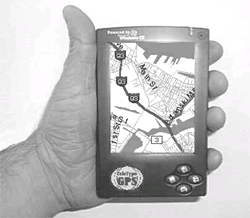Killing shortcuts
 so far, you've only heard of most accidents taking place on busy roads. But the number of accidents on narrow roads with less traffic can surpass their number on busy streets. In Japan, the ratio of traffic accidents involving the death of infants in the vicinity of their home is already on the rise. And what is responsible for this is the recent improvements in car navigation systems, which guide drivers into quiet side roads and, therefore, increase their contact with local residents, say newspaper reports from Japan.
so far, you've only heard of most accidents taking place on busy roads. But the number of accidents on narrow roads with less traffic can surpass their number on busy streets. In Japan, the ratio of traffic accidents involving the death of infants in the vicinity of their home is already on the rise. And what is responsible for this is the recent improvements in car navigation systems, which guide drivers into quiet side roads and, therefore, increase their contact with local residents, say newspaper reports from Japan.
High-tech navigation systems are now endangering the lives of people in residential areas, while offering drivers an alternative route around traffic jams on highways. Traffic experts say the huge rise in the number of cars using previously unknown shortcuts first began about 10 years ago, when road map publishers started selling "secret by-way atlases'. The situation has been further aggravated by recent improvements in car navigation systems, they say.
Navigation systems, when properly used, guide drivers to their destination without getting lost. With the Vehicle Information and Communication System ( vics ), introduced three years ago, information on traffic jams, road work and other traffic problems is transmitted to the system. Manufacturers use vics to find routes to bypass traffic.
There are regulations on what can be displayed in car navigation systems. The Japan Automobile Manufacturers Association stipulates that streets with a width of less than 5.5 metres should not be displayed when vehicles are in motion. However, this means that narrow roads can be displayed when vehicles stop.
According to the Institute for Traffic Accident Research and Data Analysis in Tokyo, the majority of infant traffic deaths result from accidents that take place in the vicinity of the children's homes. In the case of pre-school children, those who died in accidents within 100 metres of their homes accounted for 49 per cent of the total in 1988. But the figure increased to 53 per cent in 1993 and 57 per cent in 1997.
